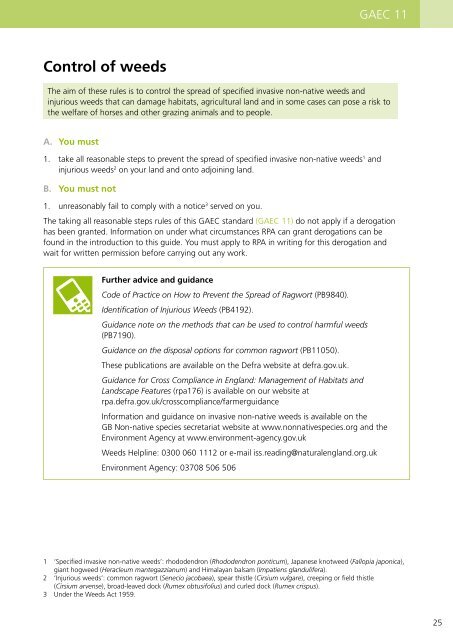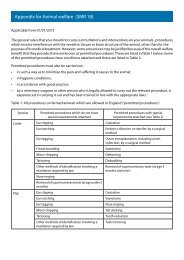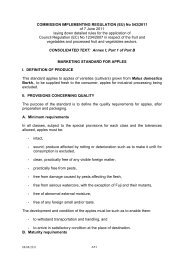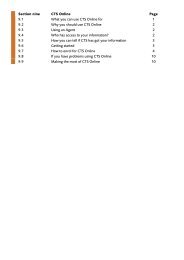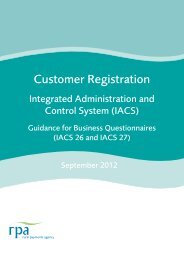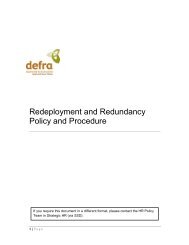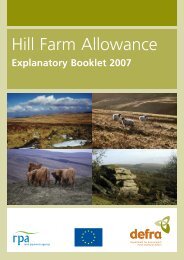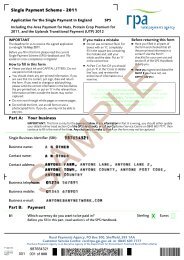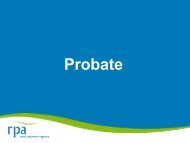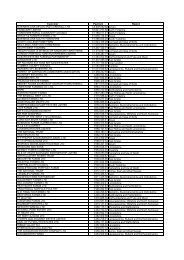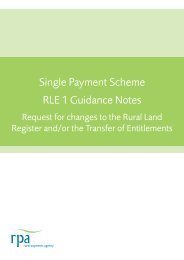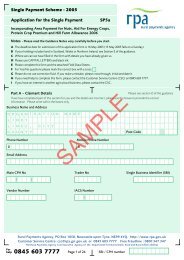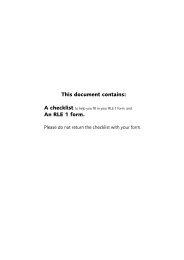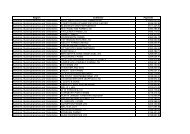The Guide to Cross Compliance in England 2012 edition.pdf
The Guide to Cross Compliance in England 2012 edition.pdf
The Guide to Cross Compliance in England 2012 edition.pdf
You also want an ePaper? Increase the reach of your titles
YUMPU automatically turns print PDFs into web optimized ePapers that Google loves.
GAEC 11Control of weeds<strong>The</strong> aim of these rules is <strong>to</strong> control the spread of specified <strong>in</strong>vasive non-native weeds and<strong>in</strong>jurious weeds that can damage habitats, agricultural land and <strong>in</strong> some cases can pose a risk <strong>to</strong>the welfare of horses and other graz<strong>in</strong>g animals and <strong>to</strong> people.A. You must1. take all reasonable steps <strong>to</strong> prevent the spread of specified <strong>in</strong>vasive non-native weeds 1 and<strong>in</strong>jurious weeds 2 on your land and on<strong>to</strong> adjo<strong>in</strong><strong>in</strong>g land.B. You must not1. unreasonably fail <strong>to</strong> comply with a notice 3 served on you.<strong>The</strong> tak<strong>in</strong>g all reasonable steps rules of this GAEC standard (GAEC 11) do not apply if a derogationhas been granted. Information on under what circumstances RPA can grant derogations can befound <strong>in</strong> the <strong>in</strong>troduction <strong>to</strong> this guide. You must apply <strong>to</strong> RPA <strong>in</strong> writ<strong>in</strong>g for this derogation andwait for written permission before carry<strong>in</strong>g out any work.Further advice and guidanceCode of Practice on How <strong>to</strong> Prevent the Spread of Ragwort (PB9840).Identification of Injurious Weeds (PB4192).Guidance note on the methods that can be used <strong>to</strong> control harmful weeds(PB7190).Guidance on the disposal options for common ragwort (PB11050).<strong>The</strong>se publications are available on the Defra website at defra.gov.uk.Guidance for <strong>Cross</strong> <strong>Compliance</strong> <strong>in</strong> <strong>England</strong>: Management of Habitats andLandscape Features (rpa176) is available on our website atrpa.defra.gov.uk/crosscompliance/farmerguidanceInformation and guidance on <strong>in</strong>vasive non-native weeds is available on theGB Non-native species secretariat website at www.nonnativespecies.org and theEnvironment Agency at www.environment-agency.gov.ukWeeds Helpl<strong>in</strong>e: 0300 060 1112 or e-mail iss.read<strong>in</strong>g@naturalengland.org.ukEnvironment Agency: 03708 506 5061 ‘Specified <strong>in</strong>vasive non-native weeds’: rhododendron (Rhododendron ponticum), Japanese knotweed (Fallopia japonica),giant hogweed (Heracleum mantegazzianum) and Himalayan balsam (Impatiens glandulifera).2 ‘Injurious weeds’: common ragwort (Senecio jacobaea), spear thistle (Cirsium vulgare), creep<strong>in</strong>g or field thistle(Cirsium arvense), broad-leaved dock (Rumex obtusifolius) and curled dock (Rumex crispus).3 Under the Weeds Act 1959.25


